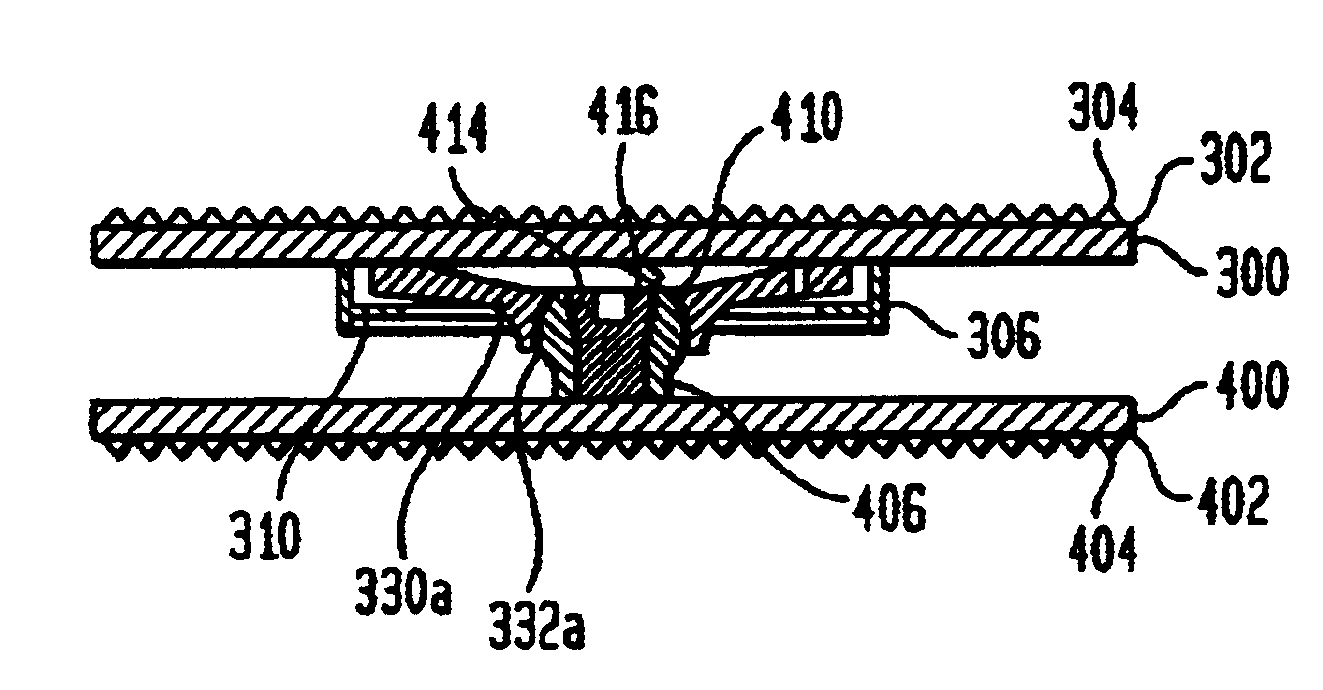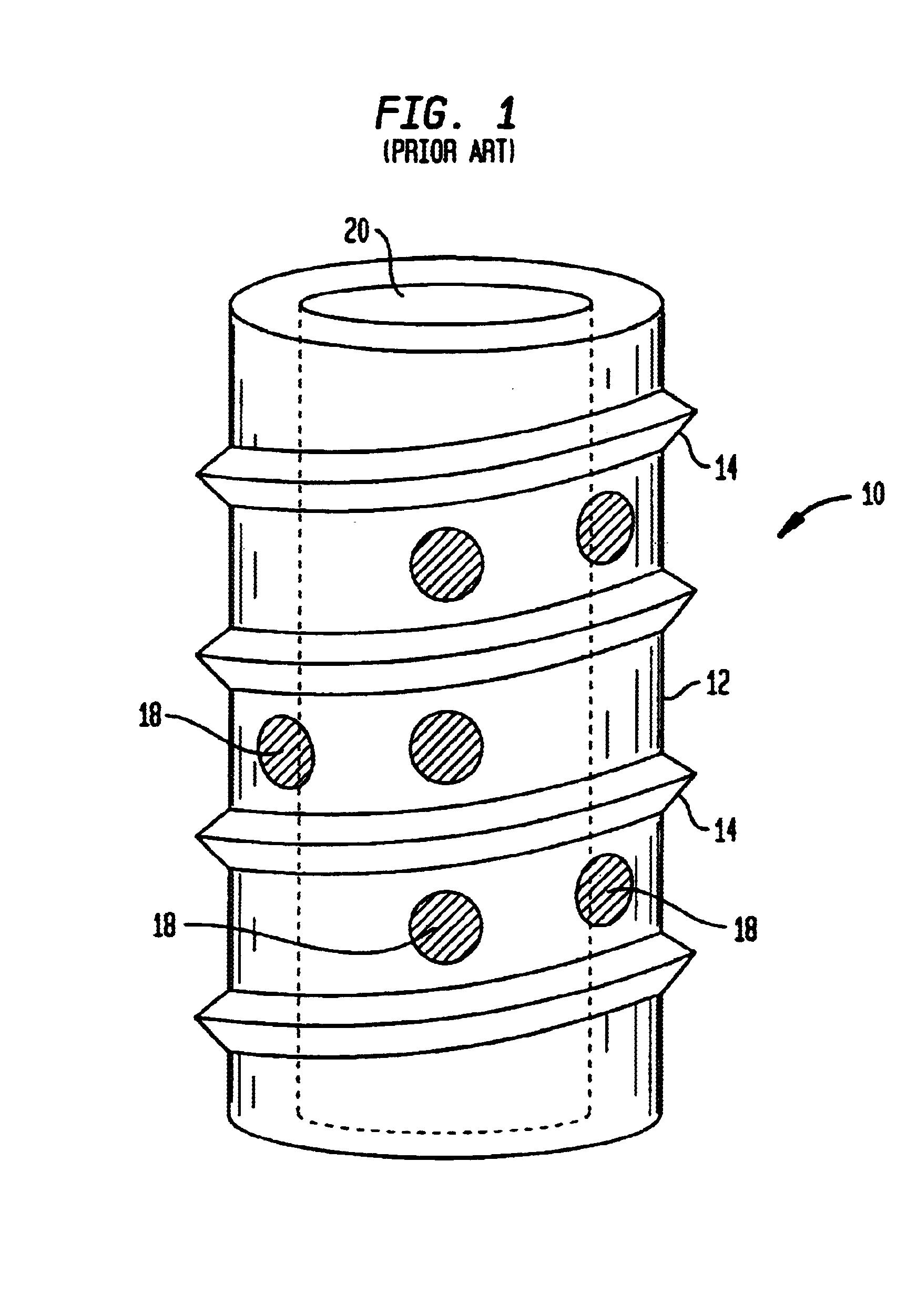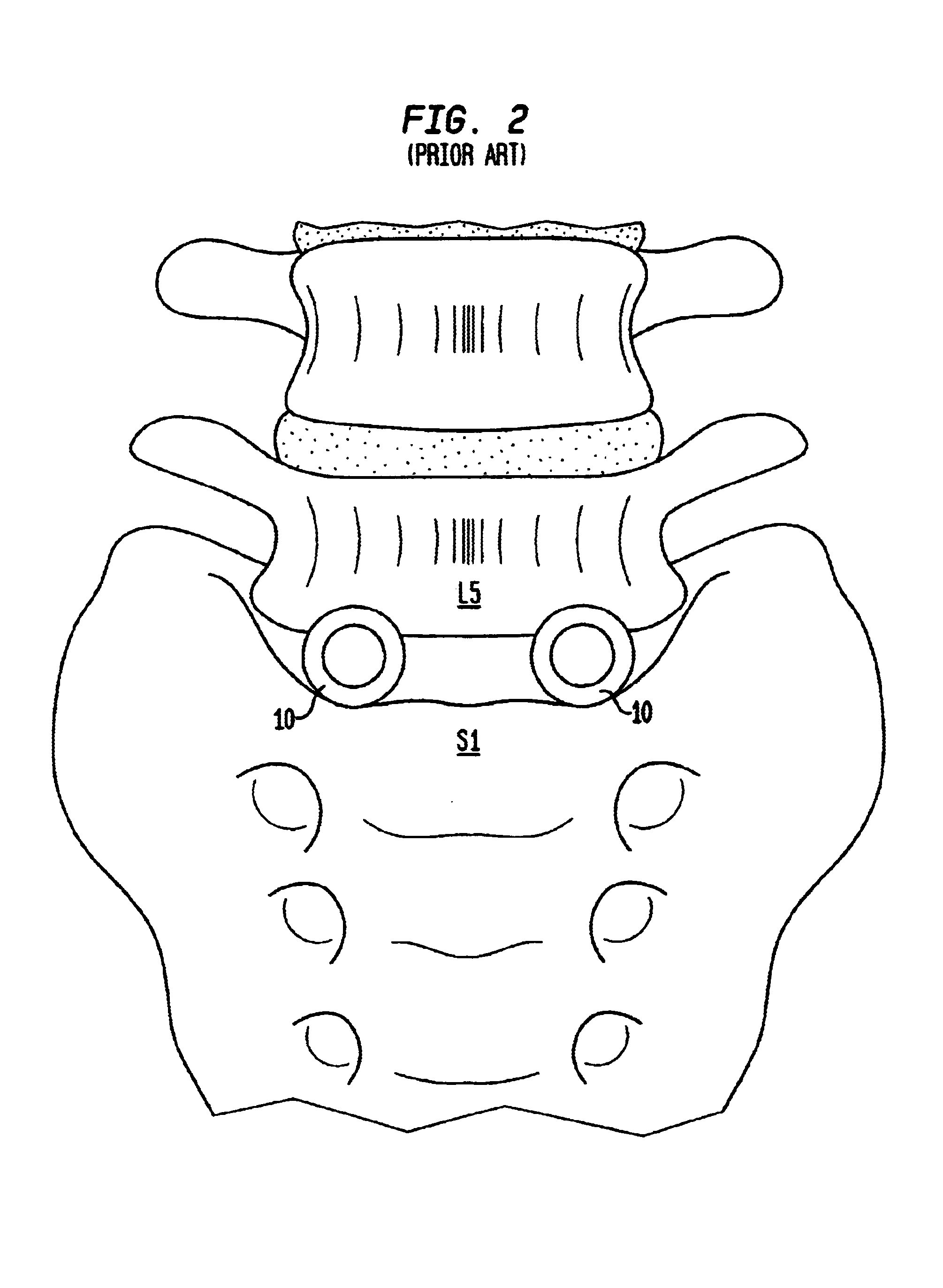Artificial intervertebral disc having a slotted belleville washer force restoring element
a technology of intervertebral discs and washers, which is applied in the field of spinal implant assemblies, can solve the problems of collateral injury to the patient's spine, limiting the overall flexibility of the spinal column, and limiting the normal motion of the patien
- Summary
- Abstract
- Description
- Claims
- Application Information
AI Technical Summary
Benefits of technology
Problems solved by technology
Method used
Image
Examples
first embodiment
[0053]Referring now to FIG. 4, an embodiment in the first embodiment family is shown partially assembled in a side cross-section view, wherein the upper and lower plates 100a,100b illustrated in FIGS. 3a-b are joined by means of a circumferential wall 120. More particularly, between the plates 100a,100b, on the exterior of the device, there is included a circumferential wall 120 that is resilient and that is provided to prevent vessels and tissues from entering within the interior of the device. It is preferred that the resilient wall 120 comprise a porous fabric or a semi-impermeable elastomeric material. The wall 120 is further designed to couple to the flanges 108a,108b of the corresponding plates 100a,100b.
[0054]Referring now to FIGS. 5a-b, a belleville washer 130 is provided in a perspective view and a top view, respectively. A belleville washer 130 is a restoring force providing device that comprises a circular shape, having a central opening 132, and which is radially arched ...
second embodiment
[0059]Referring now to FIG. 8, a modified and spirally slotted belleville washer 230 of the second embodiment family is shown in a side cross-section view. This belleville washer design is similar to the belleville washer design described above with respect to FIGS. 5a-b, but with an additional feature of having a curvate socket (e.g., an enlarged central opening 232 having a curvate volume 233) for receiving therein the ball-shaped head 207 of the post 204 of the lower plate 200 described above. More particularly, the curvate volume 233 has a substantially constant radius of curvature that is also substantially equivalent to the radius of the ball-shaped head 207 of the post 204. The spiral slots should not extend all the way to the central opening, and should approach the opening only as far as the material strength of the washer can handle without plastically deforming under the expected anatomical loading.
[0060]Referring also to FIG. 9, in which an embodiment of the second embod...
fourth embodiment
[0069]With regard to the fourth embodiment family, and referring now to FIGS. 14a-c and 15a-c, two alternate plates of the invention for use in an artificial disc of the invention are shown in bottom plan views (FIGS. 14a and 15a), side cutaway views (where cross-sectional areas and surfaces viewable behind them are shown) (FIGS. 14b and 15b), and top plan views (FIGS. 14c and 15c). More specifically, FIGS. 14a-b show a bottom plan view and a side cutaway view, respectively, of an alternate lower plate 500a. FIGS. 15a-b show a bottom plan view and a side cutaway view, respectively, of an alternate upper plate 500b.
[0070]Each plate 500a-b has an exterior surface 508a-b. Because the artificial disc of the invention is to be positioned between the facing surfaces of adjacent vertebral bodies, the two plates used in the artificial disc are disposed such that the exterior surfaces face away from one another (as best seen in FIG. 17, discussed below). The two plates are to mate with the ...
PUM
| Property | Measurement | Unit |
|---|---|---|
| restoring force | aaaaa | aaaaa |
| compressive load | aaaaa | aaaaa |
| flexible | aaaaa | aaaaa |
Abstract
Description
Claims
Application Information
 Login to View More
Login to View More - R&D
- Intellectual Property
- Life Sciences
- Materials
- Tech Scout
- Unparalleled Data Quality
- Higher Quality Content
- 60% Fewer Hallucinations
Browse by: Latest US Patents, China's latest patents, Technical Efficacy Thesaurus, Application Domain, Technology Topic, Popular Technical Reports.
© 2025 PatSnap. All rights reserved.Legal|Privacy policy|Modern Slavery Act Transparency Statement|Sitemap|About US| Contact US: help@patsnap.com



